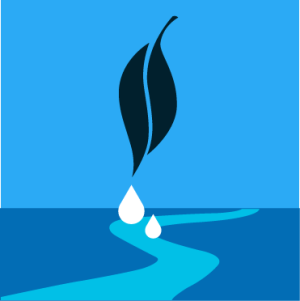Aquatic data available from NEON
September 18, 2015
As of mid-July 2015, the NEON Data Portal now offers freely available Aquatics Observation Sampling (AOS) data collected at the following six NEON field sites:
- Ordway-Swisher Suggs Lake (D03, Florida)
- Ordway-Swisher Barco Lake (D03, Florida)
- Prairie Lake (D09, North Dakota)
- Prairie Pothole (D09, North Dakota)
- Posey Creek (D02, Virginia)
- Arikaree River in (D10, Colorado)
When construction is completed in 2017, NEON will have 8 aquatic lake sites, 2 river sites and 10 aquatic stream sites. Many of these sites will be colocated with terrestrial sites to capture connections across atmospheric, terrestrial and aquatic ecosystems.
Data products now available from the NEON Data Portal include:
Chemical properties of surface water and groundwater
Water chemistry data are an important component of NEON's suite of data products relating to nutrient cycling, and can inform analyses of ecosystem dynamics within a water body, and of movement of nutrients between terrestrial and aquatic systems. A subset of these data are now available for the six sites above, with 100% of the data available in the next few months.
Stream discharge
Stream discharge is the amount of water flowing in the stream channel, and is a fundamental parameter when examining surface water nutrient and chemical exports from a watershed. Discharge, when coupled with local precipitation measurements illustrates the landscape's response to precipitation and water storage. These data are available from the Posey Creek and Arikaree River sites listed above.
NEON Scientists weigh in on the importance of aquatic data
Project Scientist Andrea Thorpe emphasizes the significance of this important milestone: "These data products are the first available from NEON's aquatic infrastructure and move us a significant step closer to demonstrating NEON's design to provide observational and instrumented data across both aquatic and terrestrial ecosystems. Furthermore, these initial data products provide a framework on which we can build to produce additional aquatic observational data products."
Staff scientist Keli Goodman adds, "We now have a good representative sample on the portal that clearly demonstrates that we have the ability to collect and provide aquatics data from a series of sites that strictly follows consistent protocols.”
Data from each of these sites will continue to be added to the portal for the full 30-year lifespan of the Observatory in addition to many more types of aquatic data that will be collected and made available from all of NEON’s aquatic sites.
More about NEON’s aquatic data collection methods
NEON collects a standard suite of data that characterize aquatic plants and other organisms, sediment and water quality at all of its aquatic field sites using the following methods:
- Aquatic Observations: Capturing in situ data related to stream and lake morphology, as well as hydrologic and climatic conditions. The project samples key organisms (e.g., fish), macroinvertebrates and riparian phenology based on temperature, water flow and peak greenness.
- Aquatic Sensor Measurements: Using aquatic sensors in streams, lakes and rivers featured at NEON sites to collect data ranging from water quality measurements to localized atmospheric measurements.
Interested in learning more about these methods? The Data Portal Document Library hosts a variety of information about NEON, including 14 of NEON’s aquatic protocols. These standardized protocols are an important part of NEON’s science design because they lead to reproducible workflows, reduce measurement uncertainty and provide guidance in the field. More protocols will be released as they become available.
